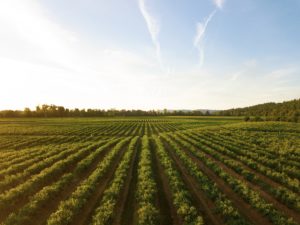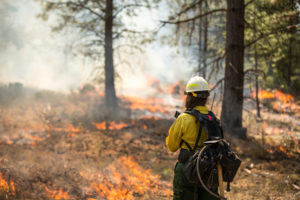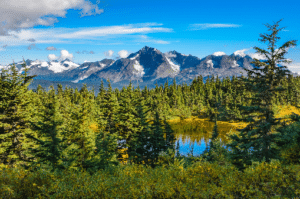The Hill: This Earth Day, reflect on the environmental progress made possible by human flourishing

This article was originally published by The Hill on April 22, 2019.
Today marks the 50th Earth Day, an appropriate time to pause and reflect on how far things have come since April 22, 1970. It’s also an occasion to consider what past progress can teach us about today’s environmental challenges.
If an attendee of the first Earth Day could travel forward to our time, she would likely expect to find a world of bleakness, suffering and privation. After all, she might have read Paul Erlich’s 1968 book “The Population Bomb,” a best-seller predicting that, unless governments intervened to dramatically reduce human reproduction, hundreds of millions of people would starve every year by the end of the 1970s. Similarly, Life magazine predicted in 1970 that city dwellers would have to wear gas masks to survive air pollution by the end of that decade.
What would our time-traveling environmentalist find instead in 2019? The human population has grown as predicted, but this growth has coincided with a stunning reduction of human suffering. Since 1990, the percentage of people living in extreme poverty has fallen from 35 percent to 10 percent, thanks in large part to global trade and an expanding role for free markets. Rather than famine, we’ve experienced one of the greatest miracles in human history as 2 billion people have escaped poverty.
Our time traveler would find she doesn’t need a gas mask because air quality has improved — thanks to government intervention, technological development and changing consumer demands. The widespread adoption of the catalytic converter dramatically reduced the incidence of smog in cities such as Los Angeles. In 1990, a cap-and-trade program for sulfur dioxide created a market incentive for industry to reduce the pollution that led to acid rain. And banning lead from gasoline dramatically improved public health. Increasing demand for electric and hybrid vehicles are reducing urban air pollution even further.
What has been the overriding theme of these improvements? Human prosperity, rather than being a threat to the environment, frees us to pursue our environmental values. As societies grow wealthier, they have more resources to dedicate to recovering species, improving air and water quality and responding to climate change.
In 1980, the economist Julian Simon bet Paul Ehrlich that, contrary to his dire predictions of scarcity, the price of resources would go down by 1990 thanks to human ingenuity — a bet the environmentally optimistic economist famously won. Continued environmental progress depends on placing similar bets on free and prosperous people to achieve their environmental goals.
Consider the success of the Forest Stewardship Council, a nonprofit formed by forestland owners, timber companies and environmental groups concerned about unsustainable forestry practice. They bet that consumers would pay a little more for wood and paper products certified as sustainable. And they were right, as their green tree trademark — which certifies that a product is produced sustainably — is now ubiquitous on consumer products.
Recently, Blue Forest Conservation and World Resources Institute bet that markets could help reduce catastrophic wildfires. Historically, funding for public forest maintenance depended on government funding and timber harvesting, both of which have declined in recent decades. Last year, the two groups completed the first Forest Resilience Bond, which raises private money to fund public forest restoration, with those benefiting from reduced fire risk compensating investors for successful mitigation strategies.
Conservationists have also found that property rights and markets are effective tools for achieving their goals. In Maine, coastal property owners recently won a case in the state’s highest court guaranteeing their right to protect the rockweed growing on their land and the ecosystem that depends on it. This commercially valuable seaweed is used in fertilizer, animal feed, and human health supplements, and industry sought to have it declared a public resource that anyone could harvest.
Pacific Legal Foundation and the Property and Environment Research Center filed an amicus brief supporting the property owners, explaining that secure private property rights are critical to conservation. The rockweed case is no anomaly; nationwide, conservation groups and environmentally conscious property owners have negotiated conservation easements to protect more than 50 million acres.
Markets are also helping to recover the iconic monarch butterfly. The Environmental Defense Fund has developed a habitat exchange program to fund habitat restoration on private working lands. Acting on a smaller scale, families across the country have responded to the news of the monarch’s plight by planting butterfly gardens to aid the beloved species’ 3,000-mile migration. Although there’s more work to do, these and other efforts led to a 144 percent increase in the butterfly population last year.
Environmental challenges persist, of course. We should be optimistic about continued progress, but not pollyannaish. Governments have a role in encouraging the provision of public goods and discouraging externalities. But the clear lesson from past successes is that we should also bet heavily on human liberty and markets to advance environmental values. Like our imagined time traveler from 1970, we should be awed by past progress and optimistic about the future environmental advances that continued human flourishing will make possible.
Jonathan Wood is a senior attorney with Pacific Legal Foundation and a research fellow with the Property and Environment Research Center. Follow him on Twitter @Jon_C_Wood.




